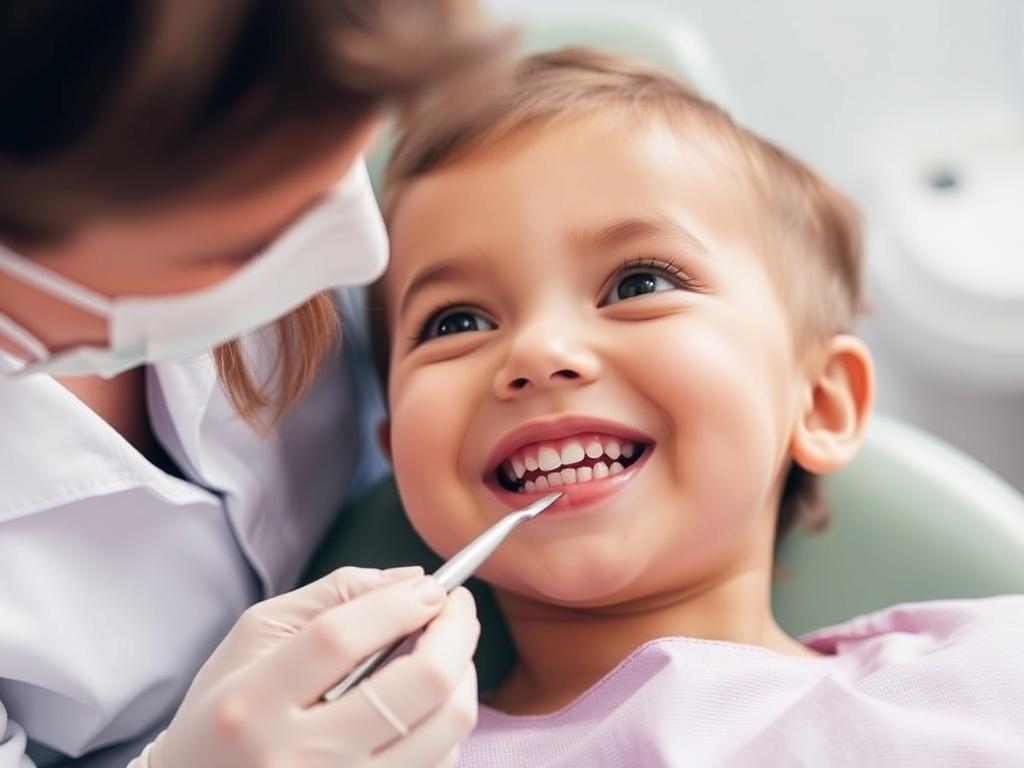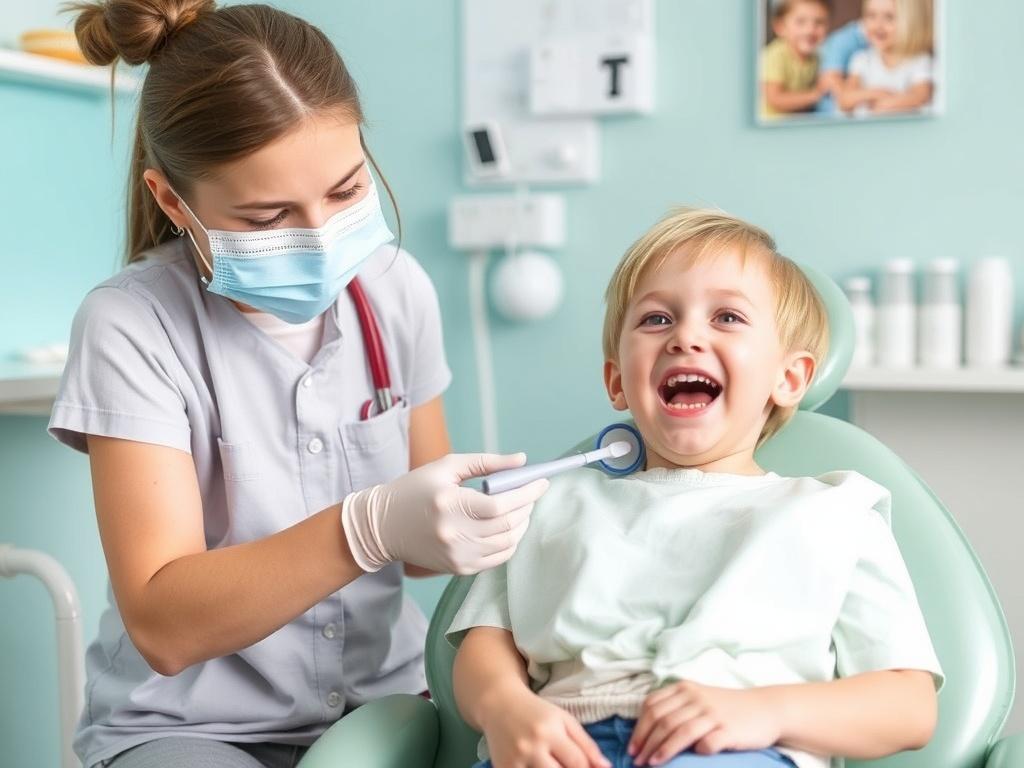Starting your child’s dental journey is one of the best gifts you can give them for a lifetime of healthy smiles. But when should a child first visit the dentist? Many parents find themselves wondering about the perfect timing for that initial dental appointment. Is it right after the first tooth appears? Or should it wait until preschool years? Understanding the right time can make a huge difference in preventing common dental problems and setting the foundation for good oral hygiene habits. This article will guide you through everything you need to know about your child’s first dental visit, what to expect, and why early visits are so crucial.
Содержание
- 1 Why Early Dental Visits Matter
- 2 What Happens During a Child’s First Dental Visit?
- 3 Common Questions Parents Ask About Their Child’s First Dental Visit
- 4 Preparing Your Child for Their First Dentist Visit
- 5 How to Maintain Your Child’s Dental Health Between Visits
- 6 Signs That You Should Schedule a Dental Visit Sooner
- 7 Choosing the Right Dentist for Your Child’s First Visit
Why Early Dental Visits Matter
It might seem unnecessary to take a baby to the dentist when they have just a few tiny teeth or none at all. However, early dental visits play a critical role in keeping your child’s mouth healthy. The American Academy of Pediatric Dentistry recommends that a child’s first visit to the dentist should happen by the age of one or within six months after the first tooth comes in. The reasoning behind this guideline is simple: catching potential issues early helps avoid complicated treatments later on.
During this first appointment, the dentist can check for any signs of decay, ensure teeth and gums are developing properly, and help parents learn the best ways to care for their child’s oral health at home. By establishing a dental home early, children feel more comfortable and less afraid, which is especially helpful for future dental visits.
When Should a Child First Visit the Dentist?
Let’s answer the most common question straight away: when should a child first visit the dentist? The answer is, as soon as the first tooth appears, or no later than the child’s first birthday. This might sound early, but it’s the optimal time for a few important reasons.
Teeth actually start developing before birth and typically begin to erupt around six months of age. However, the timing can vary from child to child. Some might get their first tooth as early as four months, while others may not see teeth until after their first birthday. Regardless of the exact timing, scheduling an initial dental check-up soon after the first tooth erupts ensures your child starts with a clean slate.
Benefits of Taking Your Child to the Dentist Early
Taking your child to the dentist early offers a range of benefits that go beyond simply checking teeth. Here are some key reasons why the first dental visit should not be delayed:
- Early Detection of Dental Issues: Pediatric dentists can identify potential problems such as tooth decay, alignment issues, or developmental delays before they worsen.
- Preventive Care: Fluoride treatments, dental sealants, and guidance on diet can be introduced early to help prevent cavities.
- Education for Parents: Parents learn about proper brushing techniques, pacifier use, weaning from bottles, and more to protect their child’s oral health.
- Building Positive Attitudes: Early exposure to the dental office environment makes children more comfortable and less anxious as they grow.
- Establishing a Dental Home: Creating a consistent relationship with a pediatric dentist encourages regular visits and ongoing care.
What Happens During a Child’s First Dental Visit?
You might be wondering, “What exactly happens when a toddler or infant goes to the dentist for the first time?” Rest assured, these visits are tailored to be gentle and informative, both for your child and for you as a parent.
Step 1: Medical and Dental History
The appointment usually begins with the dentist asking about your child’s medical and dental history. This includes questions about birth history, family dental issues, feeding habits, and any oral concerns you might have. It’s important to provide this information accurately to allow the dentist to offer personalized advice.
Step 2: Gentle Examination
The dentist will perform a quick, painless examination of your child’s mouth. They will check the development of teeth, gums, bite, and jaw. Since the child is very young, the dentist might examine them while sitting on your lap or using child-friendly tools designed to minimize discomfort.
Step 3: Cleaning and Polishing
While professional cleaning for infants might not always be necessary during the first visit, some dentists gently clean the baby teeth with a soft cloth or small tools. This helps remove any plaque or milk residue and allows the dentist to explain proper brushing techniques.
Step 4: Education and Advice
One of the most valuable parts of the first visit is the guidance parents receive. Pediatric dentists provide tips on feeding practices, the importance of avoiding sugary drinks, reducing nighttime bottle use, and establishing brushing habits. They also advise on how to handle teething discomfort and when to expect future tooth eruptions.
Common Questions Parents Ask About Their Child’s First Dental Visit
It’s natural for parents to have many questions about their child’s dental care. Let’s cover some of the most frequently asked:
| Question | Answer |
|---|---|
| Why not wait until all baby teeth have come in? | Waiting can allow dental problems to develop unnoticed. Early visits catch issues before they worsen and help establish a dental routine. |
| How often should my child visit the dentist? | Typically, children should visit the dentist every six months, but your dentist might recommend more frequent visits based on your child’s needs. |
| My child is afraid of strangers; how do I prepare them? | Read books about visiting the dentist, talk positively about the experience, and try a gentle introduction to the office before the appointment. |
| What dental products are safe for babies? | Use a small, soft-bristled toothbrush and a rice-sized smear of fluoride toothpaste after teeth start to come in. |
| Can thumb-sucking affect my child’s teeth? | Prolonged thumb-sucking can impact tooth alignment. The dentist can provide guidance on managing this habit. |
Preparing Your Child for Their First Dentist Visit
Preparing for your child’s first dental visit can ease anxiety for both of you. Here are some tips to make the day go smoothly:
- Choose a Pediatric Dentist: Pediatric dentists specialize in children’s dental care and create a friendly, welcoming environment tailored to kids.
- Schedule Wisely: Pick a time of day when your child is usually rested and happy, often mid-morning or after a nap.
- Talk It Up: Explain to your child what to expect in simple, positive terms. Avoid using scary words like “pain” or “needles.”
- Bring Comfort Items: A favorite toy or blanket can help your child feel secure in a new setting.
- Stay Calm Yourself: Children pick up on parental emotions, so staying calm and upbeat helps keep them relaxed.
Common Myths About Child’s First Dental Visits
Unfortunately, some myths might keep parents from taking their children to the dentist early enough. Let’s debunk a few common misconceptions:
- Myth 1: Baby teeth don’t matter because they fall out anyway. Baby teeth are essential for chewing, speech development, and holding space for permanent teeth.
- Myth 2: Children shouldn’t visit the dentist until they have all their teeth. Early visits prevent problems and teach good habits from the start.
- Myth 3: Dentist visits are too scary for babies and toddlers. Pediatric dentists are trained to make visits fun and non-threatening.
- Myth 4: Brushing alone is enough; no need for a dentist yet. While brushing is important, professional cleanings and exams detect issues you might miss at home.
How to Maintain Your Child’s Dental Health Between Visits

Taking your child to the dentist is only one part of ensuring good oral health. What happens between visits is just as important. Here are some easy-to-follow habits that make a big difference:
| Action | Description |
|---|---|
| Brushing Twice Daily | Use a small, soft toothbrush and fluoride toothpaste to brush your child’s teeth every morning and before bedtime. |
| Limiting Sugary Snacks and Drinks | Reduce the frequency of sugary treats to prevent cavities from forming. |
| Regular Water Intake | Encourage drinking water, especially after meals, to wash away food particles. |
| Pacifier and Thumb-Sucking Management | Gently discourage habits that may affect teeth alignment as your child grows. |
| Using Dental Floss | Introduce flossing once teeth start to touch, usually around age two or three. |
Signs That You Should Schedule a Dental Visit Sooner
Sometimes, children may need to see the dentist earlier than the usual schedule due to certain signs or symptoms. Keep an eye out for the following:
- White spots or discoloration on teeth
- Excessive drooling or chewing on one side
- Bleeding or swollen gums
- Loose teeth before the appropriate age
- Sensitivity or pain when eating or drinking
- Difficulty biting or chewing
If you notice any of these signs, contact your pediatric dentist promptly to prevent escalation of problems.
Choosing the Right Dentist for Your Child’s First Visit
Not all dentists are created equal when it comes to children’s oral health. Here are some factors to consider when choosing the right dental professional:
Specialization in Pediatric Dentistry
Pediatric dentists undergo additional training specifically to treat infants, toddlers, and children. They understand the unique needs and fears young patients may have.
Child-Friendly Environment
Look for a clinic designed to be colorful and inviting, with toys, books, and staff who know how to engage children in a fun way.
Good Reviews and Recommendations
Ask other parents, family members, or your pediatrician for recommendations. Online reviews can also provide insight into the dentist’s patient care approach.
Availability and Location
Choose a dentist with convenient appointment times and a location close to home or daycare, so keeping visits is easier.
Insurance and Costs
Verify that the dentist accepts your insurance and inquire about payment plans if needed, to avoid surprises.
Conclusion
Knowing when a child should first visit the dentist is a crucial step towards ensuring a life-long journey of good oral health. The consensus among dental experts is clear: the first dental appointment should happen by the first birthday or within six months of the first tooth’s eruption. Early visits allow pediatric dentists to examine your child’s mouth, provide important preventive care, and offer parents valuable advice on at-home dental hygiene. They help prevent anxiety by making dental care a positive and familiar experience right from the start. By adopting regular dental visits, practicing good brushing and eating habits at home, and seeking professional care promptly when issues arise, you set the stage for your child’s healthy smiles now and in the future. Embrace the journey, and remember, there’s no better time to start than today!




